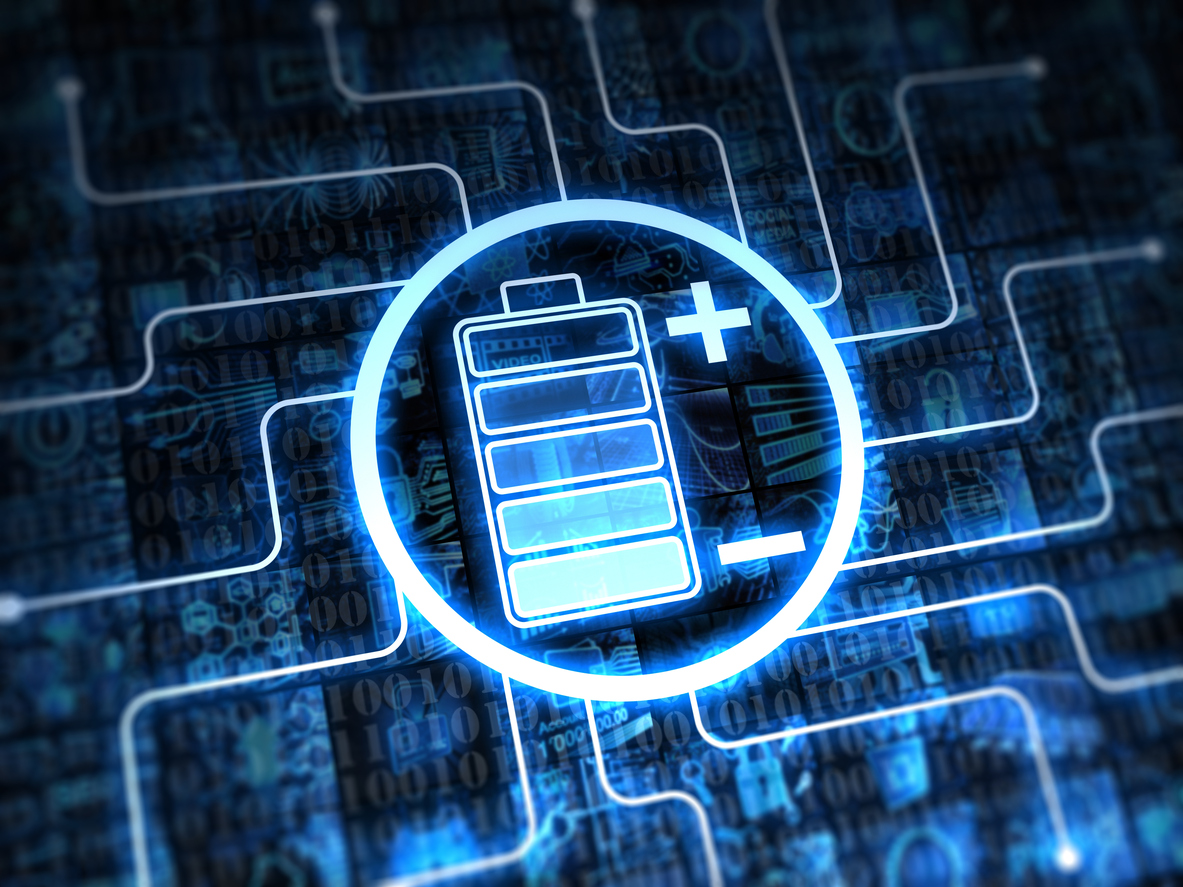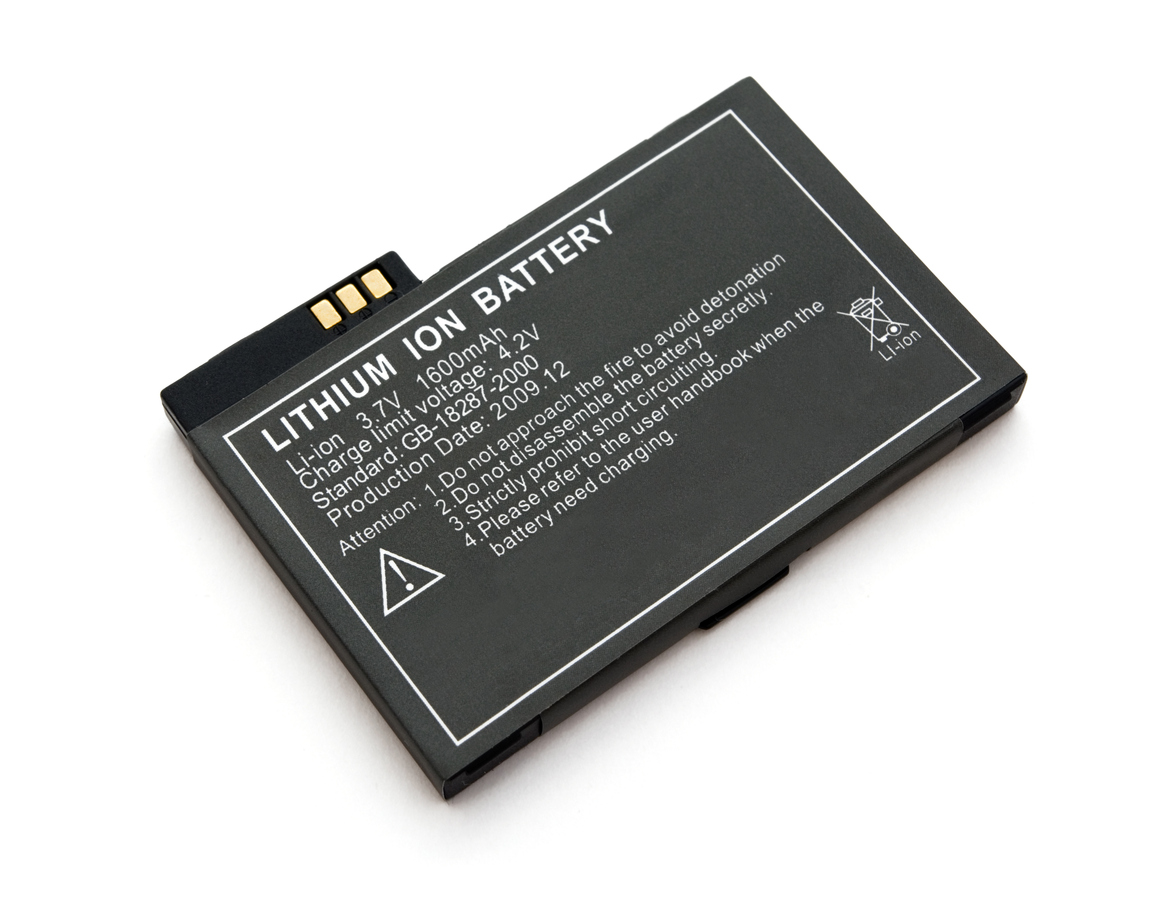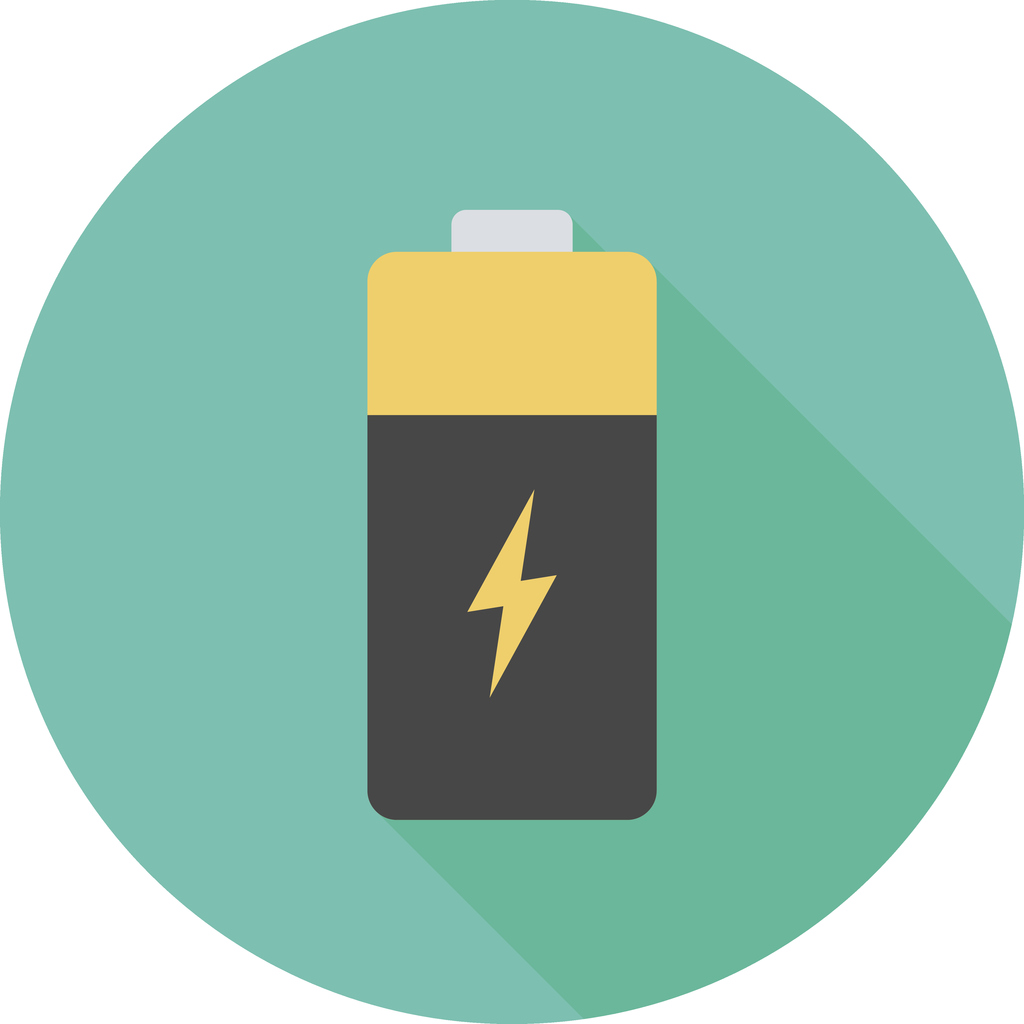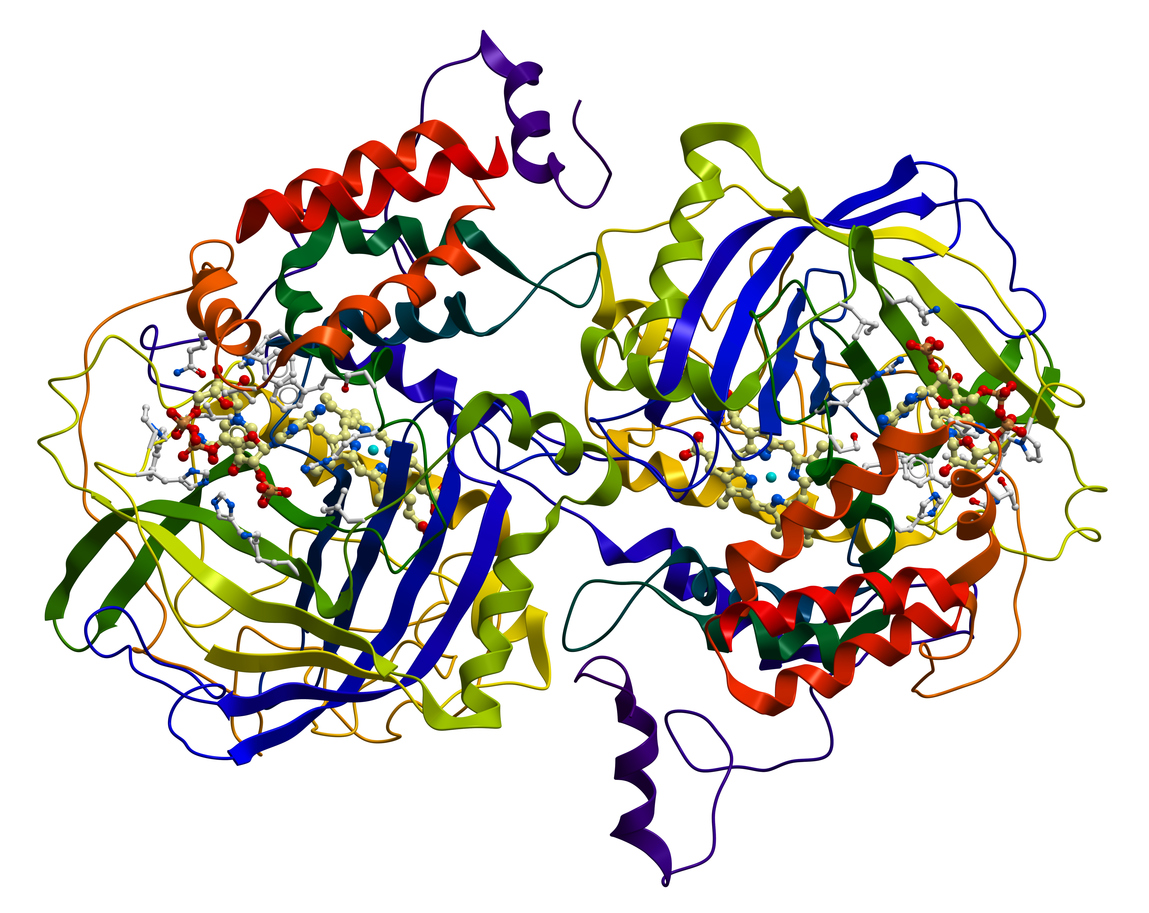The electric vehicle market continues to build momentum every year, with consumers around the world growing more interested. But in order for EVs to pave the way for the future of transportation, more efficient, longer-lasting batteries will need to be developed.
 The consumer demand for seamless, integrated technology is on the rise, and with it grows the Internet of Things, which is expected to grow to a multitrillion-dollar market by 2020. But in order to develop a fully integrated electronic network, flexible, lightweight, rechargeable power sources will be required.
The consumer demand for seamless, integrated technology is on the rise, and with it grows the Internet of Things, which is expected to grow to a multitrillion-dollar market by 2020. But in order to develop a fully integrated electronic network, flexible, lightweight, rechargeable power sources will be required.
A team of researchers from Ulsan National Institute of Science and Technology is looking to address that issue, developing inkjet-printed batteries that can be modified to fit devices of any shape and size. The team reports that the newly developed inks can be printed onto paper to create a new class of printed supercapacitors.
(READ: Rise of Cyber Attacks: Security in the Digital Age)
This from Ulsan National Institute of Science and Technology:
The process involves using a conventional inkjet printer to print a preparatory coating—a ‘wood cellulose-based nanomat’—onto a normal piece of A4 paper. Next, an ink of activated carbon and single-walled nanotubes is printed onto the nanomat, followed by an ink made of silver nanowires in water. These two inks form the electrodes. Finally, an electrolyte ink—formed of an ionic liquid mixed with a polymer that changes its properties when exposed to ultraviolet light—is printed on top of the electrodes. The inks are exposed at various stages to ultraviolet irradiation and finally the whole assembly is sealed onto the piece of paper with an adhesive film.
 Lithium-ion batteries power a vast majority of the world’s portable electronics, but the magnification of recent safety incidents have some looking for new ways to keep battery-related hazards at bay. The U.S. Navy is one of those groups, with chemists in the U.S. Naval Research Laboratory (NRL) unveiling a new battery, which they say is both safe and rechargeable for applications such as electric vehicles and ships.
Lithium-ion batteries power a vast majority of the world’s portable electronics, but the magnification of recent safety incidents have some looking for new ways to keep battery-related hazards at bay. The U.S. Navy is one of those groups, with chemists in the U.S. Naval Research Laboratory (NRL) unveiling a new battery, which they say is both safe and rechargeable for applications such as electric vehicles and ships.
“We keep having too many catastrophic news stories of lithium-ion batteries smoking, catching fire, exploding,” says Debra Rolison, head of NRL’s advanced electrochemical materials section and co-author of the recently published paper. “There’ve been military platforms that have suffered severe damage because of lithium-ion battery fires.”
Once example of such damage came in 2008, when an explosion and fire caused by a lithium-ion battery damaged the Advanced SEAL Delivery Vehicle 1 at its base in Pearl Harbor.
While generally safe when manufactured properly, lithium-ion batteries host an organic liquid which is flammable if the battery or device gets too hot.
 Like all things, batteries have a finite lifespan. As batteries get older and efficiency decreases, they enter what researchers call “capacity fade,” which occurs when the amount of charge your battery could once hold begins to decrease with repeated use.
Like all things, batteries have a finite lifespan. As batteries get older and efficiency decreases, they enter what researchers call “capacity fade,” which occurs when the amount of charge your battery could once hold begins to decrease with repeated use.
But what if researchers could reduce this capacity fade?
That’s what researchers from Argonne National Laboratory are aiming to do, as demonstrated in their open access paper, “Transition Metal Dissolution, Ion Migration, Electrocatalytic Reduction and Capacity Loss in Lithium-Ion Full Cells,” which was recently published in the Journal of The Electrochemical Society.
The capacity of a lithium-ion battery directly correlates to the amount of lithium ions that can be shuttled back and forth as the device is charged and discharged. Transition metal ions make this shuttling possible, but as the battery is cycled, some of those ions get stripped out of the cathode material and end up at the battery’s anode.
 After an unusually intense heat wave, downpour, or drought, Noah Diffenbaugh and his research group inevitably get phone calls and emails asking whether human-caused climate change played a role.
After an unusually intense heat wave, downpour, or drought, Noah Diffenbaugh and his research group inevitably get phone calls and emails asking whether human-caused climate change played a role.
A new framework will help them respond.
“The question is being asked by the general public and by people trying to make decisions about how to manage the risks of a changing climate,” says Diffenbaugh, a professor of earth system science at Stanford University’s School of Earth, Energy & Environmental Sciences.
“Getting an accurate answer is important for everything from farming to insurance premiums, to international supply chains, to infrastructure planning.”
In the past, scientists typically avoided linking individual weather events to climate change, citing the challenges of teasing apart human influence from the natural variability of the weather. But that’s changing.
“Over the past decade, there’s been an explosion of research, to the point that we are seeing results released within a few weeks of a major event,” says Diffenbaugh, who is also a senior fellow at the Stanford Woods Institute for the Environment.
Four steps
In a new study, published in the Proceedings of the National Academy of Sciences, Diffenbaugh and colleagues outline a four-step “framework” for testing whether global warming has contributed to record-setting weather events. The new paper is the latest in a burgeoning field of climate science called “extreme event attribution,” which combines statistical analyses of climate observations with increasingly powerful computer models to study the influence of climate change on individual extreme weather events.
In order to avoid inappropriately attributing an event to climate change, the authors began with the assumption that global warming had played no role, and then used statistical analyses to test whether that assumption was valid. “Our approach is very conservative,” Diffenbaugh says. “It’s like the presumption of innocence in our legal system: The default is that the weather event was just bad luck, and a really high burden of proof is required to assign blame to global warming.”
Freezing Lithium Batteries for Safer, Bendable Energy Storage
Posted on April 26, 2017 by Amanda Staller Researchers from Columbia University School of Engineering and Applied Science recently developed a method that could result in safer, longer-lasting, bendable lithium-ion batteries. To do this, the team applied ice-templating to control the structure of the solid electrolyte for lithium-ion batteries.
Researchers from Columbia University School of Engineering and Applied Science recently developed a method that could result in safer, longer-lasting, bendable lithium-ion batteries. To do this, the team applied ice-templating to control the structure of the solid electrolyte for lithium-ion batteries.
Recent reports of cell phones and hoverboards bursting into flames have made people aware of the safety concerns related to the lithium-ion battery’s liquid electrolyte. The researchers behind this new work decided to confront the safety issues by exploring the use of a solid electrolyte, therefore developing an all-solid-state lithium battery.
[The researchers] were interested in using ice-templating to fabricate vertically aligned structures of ceramic solid electrolytes, which provide fast lithium ion pathways and are highly conductive. They cooled the aqueous solution with ceramic particles from the bottom and then let ice grow and push away and concentrate the ceramic particles. They then applied a vacuum to transition the solid ice to a gas, leaving a vertically aligned structure. Finally, they combined this ceramic structure with polymer to provide mechanical support and flexibility to the electrolyte.
By: Jeffrey Gardner, University of Maryland, Baltimore County
 When people hear about prospecting, they might imagine old forty-niners (miners) with pickaxes hunting for gold, or maybe an agent for the San Francisco 49ers (football team) scouting for new talent. In my lab we do another version, called bio-prospecting – searching for useful substances from natural sources. Bio-prospecting has produced many valuable products, including anti-cancer drugs derived from plants and extremely strong silks spun by tropical spiders.
When people hear about prospecting, they might imagine old forty-niners (miners) with pickaxes hunting for gold, or maybe an agent for the San Francisco 49ers (football team) scouting for new talent. In my lab we do another version, called bio-prospecting – searching for useful substances from natural sources. Bio-prospecting has produced many valuable products, including anti-cancer drugs derived from plants and extremely strong silks spun by tropical spiders. ![]()
Our work focuses on enzymes, which are proteins that speed up chemical reactions. We are looking for new and powerful enzymes that can break apart polysaccharides – common molecules that consist of long chains of sugars. Polysaccharides are extremely abundant in the fruits and vegetables that we eat, the cotton clothes we wear and the lumber we use to build houses.
Enzymes that can break down polysaccharides have many uses – for example, in detergents that dissolve stains on clothes. Similar types of enzymes can also be used to release sugars found in plants, which can then be used for manufacturing biodegradeable plastic.
In my lab, we are searching for new enzymes that could improve biotechnology for making renewable fuels and chemicals.
 Scientists studying climate change have long debated exactly how much hotter Earth will become given certain amounts of greenhouse gas emissions. Models predicting this “climate sensitivity” number may be closer to the observed reality than some previously thought, according to a new study.
Scientists studying climate change have long debated exactly how much hotter Earth will become given certain amounts of greenhouse gas emissions. Models predicting this “climate sensitivity” number may be closer to the observed reality than some previously thought, according to a new study.
Observations in the past decade seemed to suggest a value lower than predicted by models. But the new study shows that two leading methods for calculating how hot the planet will get are not as far apart as they have appeared.
In climate science, the climate sensitivity is how much the surface air temperature will increase if you double carbon dioxide from pre-Industrial levels and then wait a very long time for the Earth’s temperature to fully adjust. Recent observations predicted that the climate sensitivity might be less than that suggested by models.
 When a battery is used, electrically charged ions travel between electrodes, causing those electrodes to shrink and swell. For some time, researchers have wondered why the electrode materials – which are fairly brittle – don’t crack in the expansion and contraction styles.
When a battery is used, electrically charged ions travel between electrodes, causing those electrodes to shrink and swell. For some time, researchers have wondered why the electrode materials – which are fairly brittle – don’t crack in the expansion and contraction styles.
Now, a team of researchers from MIT, led by ECS member Yet-Ming Chiang, may have found the answer to this mystery.
This from MIT:
While the electrode materials are normally crystalline, with all their atoms neatly arranged in a regular, repetitive array, when they undergo the charging or discharging process, they are transformed into a disordered, glass-like phase that can accommodate the strain of the dimensional changes.
 A newly created material may have the capacity to double the efficiency of solar cells.
A newly created material may have the capacity to double the efficiency of solar cells.
Conventional solar cells are at most one-third efficient, a limit known to scientists as the Shockley-Queisser Limit. The new material, a crystalline structure that contains both inorganic materials (iodine and lead) and an organic material (methyl-ammonium), boosts the efficiency so that it can carry two-thirds of the energy from light without losing as much energy to heat.
In less technical terms, this material could double the amount of electricity produced without a significant cost increase, according to the new study in Science.
Enough solar energy reaches the earth to supply all of the planet’s energy needs multiple times over, but capturing that energy has been difficult—as of 2013, only about 1 percent of the world’s grid electricity was produced from solar panels.
The new material, called a hybrid perovskite, would create solar cells thinner than conventional silicon solar cells, and is also flexible, cheap, and easy to make, says Libai Huang, assistant professor of chemistry at Purdue University.

